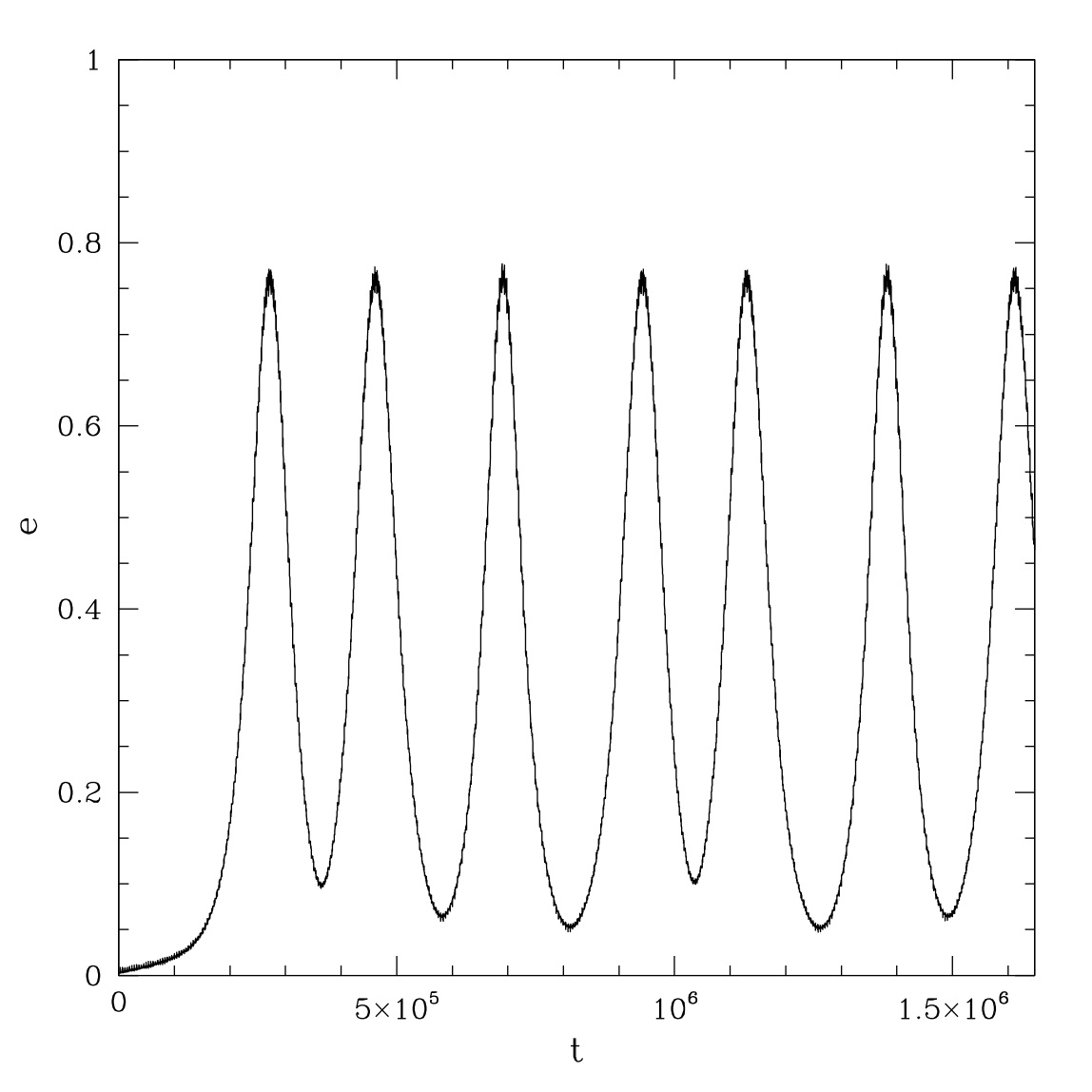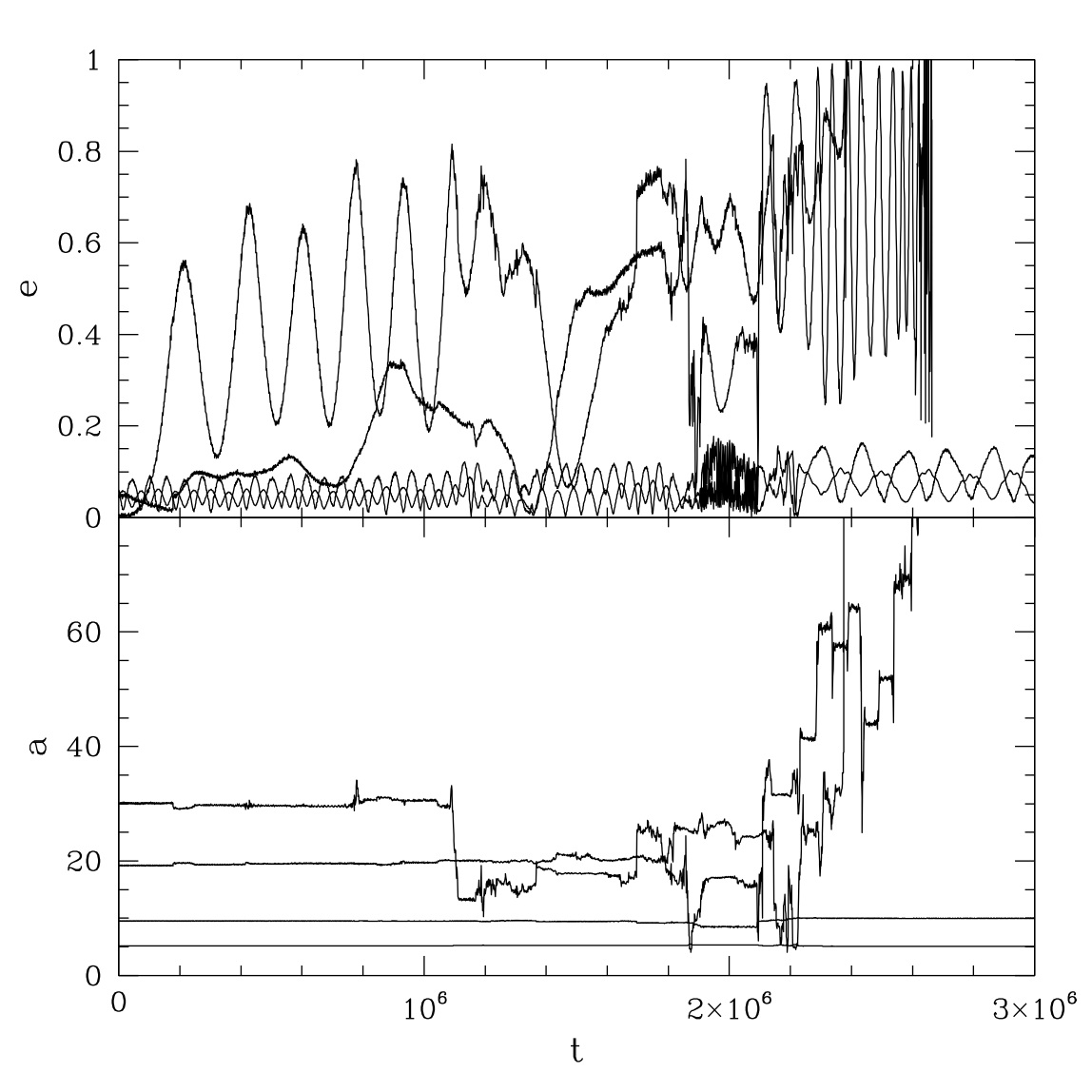Planetary systems in binaries
At least 30 per cent of the so far detected extrasolar planets are found to be orbiting stars which are members of a binary system. We have explored how the companion star in an inclined binary affects a solar-system-like planetary system. We consider a planetary systems in which the gas giants are on long-term stable orbits wider than about 5 au to be solar-system like.
Even though solar-system-like planetary systems could potentially form around stars which are members of primordial binaries, we have assumed that they, like our own solar system, formed around an initially single star. The planet host-star was then later exchanged into a binary system through an exchange encounter in a young stellar cluster. If a planet-hosting star has been exchanged into a binary system the orientation of the plane of the planets with respect to the orbital plane of the companion star is completely random.
We have performed numerical simulations of solar-system-like planetary systems inside a wide binary. We simulated both coplanar and highly inclined systems. In the latter case the Kozai mechanism operates, making the orbits of the planets more eccentric. This leads to orbit crossings, which in turn can cause close encounters between the planets to occur. The outcome of such strong planet-planet interactions may be the ejection of one or more planets, leaving those remaining on tighter and more eccentric orbits. You can read more about this study in the refereed article Malmberg, Davies & Chambers 2007.

Figure 1
The eccentricity evolution for a single, Neptune-like planet, orbiting a star which is
a member of an inclined binary system. The companion star has a
semi-major axis of 300 au, an eccentricity of 0.3 and a mass equal
to half that of the Sun's. The inclination between the orbital plane
of the planets and the orbital plane of the companion star is 60 degrees.
As can be seen the eccentricity of the planet oscillates periodically
with time, reaching a maximum value of 0.78. The evolution agrees well
with the theory of the Kozai mechanism, and provides a good example
of what happens to the orbit of a single planet in a system in which
the Kozai mechanism is active.

Figure 2
The time evolution of the orbits the planets in a planetary system closely resembling the outer solar system (i.e Jupiter, Saturn, Uranus & Neptune), but inside a strongly inclined binary. The properties of the companion star is the same as that in Fig. 1 (a = 300 au, e = 0.3, m = 0.5 MSun and i = 60 degrees). As can be seen the eccentricity of the outer planet quickly starts to oscillate, like in the single-planet case (see Fig. 1). However, as there are now several planets in the system the high eccentricity leads to orbit crossings, which, after just a few million years cause the ejection of the two outermost planets.